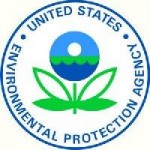
I. Overview
For many years, recycling advocates have asserted that it makes both economic and ecologic sense to recycle high volume consumer plastic packaging used both at home and in out-of-home applications. Until now, there has been little data to support this contention. Given the increasing demand for recycled plastic resins and a growing interest in sustainable packaging, a scientific analysis of the environmental impact of recycled plastics is a valuable tool for all involved stakeholders.
In an effort to determine the environmental merits of plastic bottle recycling, four associations collaborated on the fielding of a Life Cycle Inventory (LCI) Study that examines the relative environmental impacts of virgin vs. recycled High Density Polyethylene (HDPE) and Polyethylene Terephthalate (PET) resins. The groups are The Plastics Division of the American Chemistry Council, the Association of Postconsumer Plastic Recyclers (APR), the National Association for PET Container Resources (NAPCOR), and the PET Resin Association (PETRA).
For reference, HDPE is widely used in containers such as milk jugs and detergent bottles, while PET is the primary resin used to produce soft drink and water bottles. Thanks to both curbside recycling programs and bottle deposit laws, these two plastics are easy for consumers to recycle. For reference, the EPA’s Municipal Solid Waste in the United States: 2008 Facts and Figures indicates the following recycling rates:

The study was performed by Franklin Associates, an independent provider of life cycle services. All data were drawn from publish sources. Besides its own data, which are publish in the U.S. Department of Energy’s National Renewable Energy Laboratory (NREL) U.S. Life Cycle Database (www.nrel.gov/lci), virgin HDPE and PET data were taken from the American Chemistry Council’s database, revised in early 2010.
II. Methodology
The steps for production of postconsumer recycled resins were divided into three main stages: recovery (collection), sorting and separation, and reclaimer operations (conversion into new resins). Then, the energy requirements, solid wastes, and atmospheric and water-borne emissions were developed for 100% postconsumer recycled HDPE and PET resins, and the data were compared to its virgin counterparts.
The results were developed using two common approaches, both of which are acceptable under ISO standards:
In the “cut-off” method, all virgin material production results (known as “burdens”) are assigned to the first use of the material. The burdens assigned to the recycled system begin with recovery of the postconsumer material. Then, all of the burdens for material recovery, transport, separation & sorting, and reprocessing are assigned to the recycled material. This method helps maximize the benefits of recycled resin use.
In the open-loop allocation method, the burdens for virgin and recycled material are shared among all the sequential useful lives of the material. For purposes of presenting results for recycled resin, the analysis assumes two useful lives (virgin and then one recycled product) prior to disposal. The use of “open loop” values is helpful in deriving conservative comparisons to virgin resins.
Also, collection of materials for recycling is performed two ways: by weight and by volume. Each produces a different profile relating to fuel consumption, primarily during transport. To account for these differences, the two allocations methods described above, cut-off and open-loop, were analyzed using both weight and compacted volume data.
III. Study Scope and Limitations
- This analysis is focused on the production of recycled resin as a manufacturing input. Thus, no burdens are included for manufacturing, use, or end-of-life management of products made from the recycled resins. The environmental burdens of those lifecycle stages will depend upon the specific application in which the resin is being used.
- Based on the uncertainty of data used for energy, solid waste, and emissions modeling, differences between systems are not considered meaningful unless they are greater than 10% for energy and postconsumer solid waste, and 25% for industrial solid waste and emissions data.
- The three categories studied – energy, solid waste, and emissions – are independent of each other and no agreed upon weighting system has been developed that allows for their being combined to produce “an answer”.
- The data collected does not compare recycling to other alternative end-of-life scenarios such as energy recovery or chemical transformation. Each alternative could have different advantages and disadvantages.
IV. Findings
A. Energy Consumption
Recycled HDPE and PET resin production consumes significantly less energy than does the production of virgin HDPE and PET resins. Depending upon the resin and allocation methodology, the recycled resins consume between 38-88% less energy during production than do comparable virgin resins. (See Table 1)
Table 1: Energy Consumption: Million Btu Consumed Per 1000 Lbs. of Resin Produced















